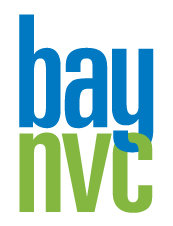by Miki Kashtan
A little over a year ago I had a pretty significant crisis of faith, what some might call a dark night of the soul. This happened after 14 years of being on two parallel and mutually transforming paths: my personal dedication to living undefendely and working my way through fear, and my work of teaching Nonviolent Communication.
The crisis, simply put, was that I temporarily lost my faith that what I did could have a lasting effect on people’s consciousness. I knew, even in the midst of the anguish, that I was deeply privileged to touch people’s lives in significant ways on a consistent basis. I also knew that being moved and inspired was not quite the same as the choice to integrate this consciousness into daily living, into the fabric of how we make choices moment by moment, into what our lives are about.
I knew I wanted company in embracing the ferocious experience of a life given to the service of consciousness transformation, internally and in the world. Against the weight of my crisis I stretched my spirit into envisioning what this truly meant and what it would take to create this full alignment. Thus was planted the seed of what has now become an active and vibrant community of support for consciousness transformation.
Soon I had a list of core commitments (now numbering 17) that together comprised what a consciousness of nonviolence meant to me. In writing them, I wanted to honor the paradox that I see in using the word “commitment”: on the one hand, life is radically uncertain and we cannot know the future of our ability to make anything happen. On the other hand, the level of inner seriousness that “commitment” entails was important to me.
I wrote the commitments in a way that highlights and provides a constant reminder of our absolute need for support to do this work. Which is why I wanted a community, not just the commitments. I wanted a community that would extend well beyond what I had to offer in terms of experience, vision, leadership, enthusiasm, and energy. I envisioned a group of people willing to take a personal stand for truth and for love, and available to support each other in moving closer and closer to living a life of love and courage. I felt the desire to model this endeavor after Gandhi and Martin Luther King and the countless known and unknown heroes of nonviolence. This meant supporting both action and inner cultivation, as neither alone would be sufficient.
I launched the Consciousness Transformation Community, or CTC, on February 18th, 2010. What has happened in this year has gone beyond what I could have imagined. We now have 68 people from 6 different countries in a thriving, vibrant virtual community. The biggest surprise of this year was the delightful collapse of the very elaborate structure I initially attempted to put in place. I found it so liberating that a simple and organic structure I couldn’t possibly have thought of on my own replaced my original complex one through an emergent and dialogic process. Now any member of the community has full access to contributing anything they want. We have several options every week to connect on the phone, most of which are led by members of the community other than myself. We have an interactive website for connection, mutual support, initiatives, and discussions of all sorts. We reflect regularly on how we work together. Anyone is invited to take responsibility for the functioning of the community and to participate in decision-making. Lastly, contributions, both to the group and to me, are done entirely on a voluntary basis, as a gift economy.
Gandhi himself had a core group of about 70 people who worked with him, who joined in his “experiments in truth” and lived together in his Ashram. I have even more conviction now that those of us who want to live a life that rests on love, courage, care, and service need each other, because we are by definition going against the grain.
I asked people to share what being part of CTC means to them, so others could have a sense of it. One person said: "Even if I will never actually meet these people in-person, it is very reassuring and encouraging for me to be reminded that there are other people out in this world who are actively committed to living their lives in a consciously nonviolent way." We need community to know we are not alone, for inspiration, for mutual support. Another said: “This community helps remind me of my commitment to nonviolence and hold me accountable to that commitment.” Support sometimes takes the form of reminding us, in difficult moments, what we have committed to.
Our first anniversary is coming up. I want to share this bounty more widely with those who feel called to this particular experiment in truth. Four times a year we open our phone calls to guests. The next open call is this Tuesday, February 1st, at 10:30am pacific time. What is your own dream for your consciousness transformation? What is your dream of where you can contribute significantly beyond your personal sphere? You can join the call (email ctc@baynvc.org to get a call-in number and pin), or you can share your thoughts as comments here. I am celebrating what we have done, and have more faith in what is possible as a result of coming together to take a stand for nonviolence.


